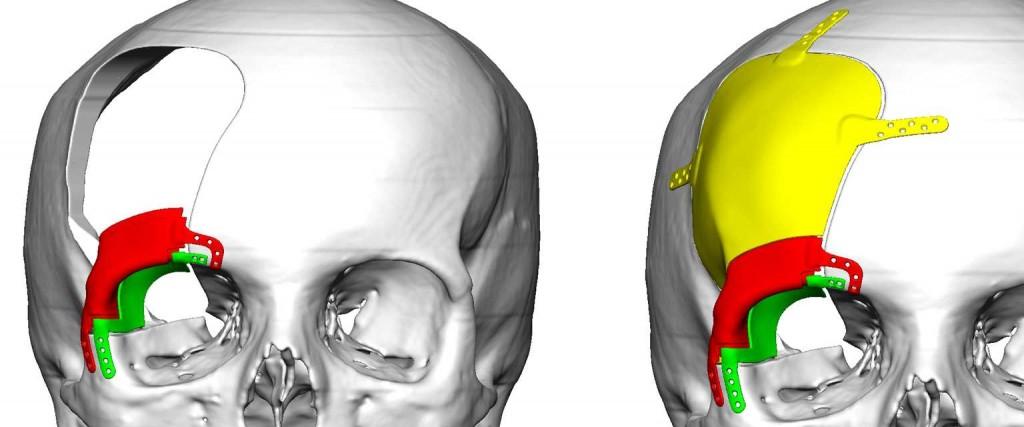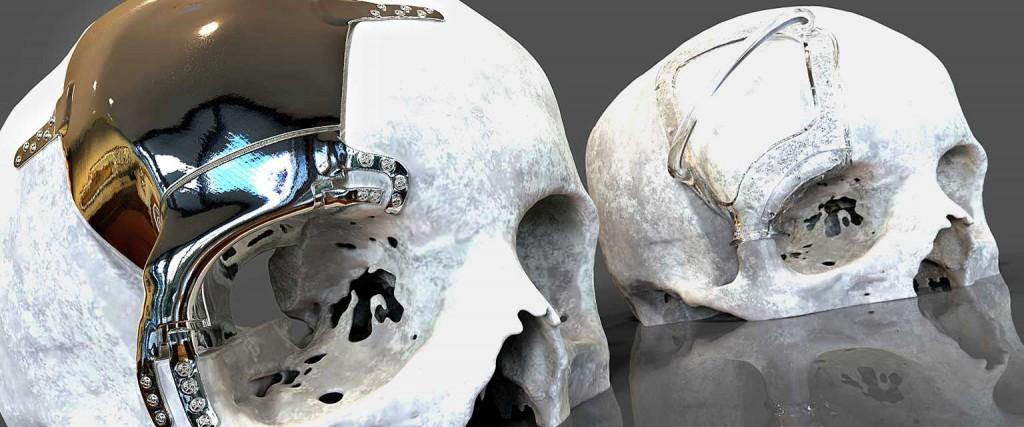It’s not an exaggeration to proclaim that 3D technology is saving lives. Aside from being an incredibly fascinating technology, additive manufacturing and accompanying technology like 3D scanning and modeling are providing solutions to formerly difficult if not insoluble problems. That’s certainly the case in the field of medicine. One patient with a life- and sight-threatening tumor was the beneficiary of a revolutionary surgical procedure that involved 3D scanning, modeling, and printing as well as successful collaboration.
The National Centre for Product Design and Development Research (PDR), a leading design and research institute within Cardiff Metropolitan University in Cardiff, Wales (UK), has recently engaged in a close collaborative relationship with a maxillofacial surgeon, Dr. Satyajeet Bhatia from the University Hospital of Wales in Cardiff, to establish a safe surgical plan involving 3D scanning, modeling, and printing for a patient diagnosed with a bone tumor. The tumor was invading the orbit, the cavity in the skull where the eye and its appendages are located, and was applying pressure to the optic nerve and endangering the patient’s eyesight.
 In operation for over 20 years, PDR combines high quality research activity and consultancy to provide its partners with new approaches to product design, development, and implementation. Partnering with Dr. Bhatia, PDR’s overall objective was to improve the accuracy, predictability, and speed of the surgical procedure. The surgical plan included creating a custom surgical cutting guide that would help Dr. Bhatia reconstruct the affected area of the skull using a 3D printed custom titanium multi-part implant.
In operation for over 20 years, PDR combines high quality research activity and consultancy to provide its partners with new approaches to product design, development, and implementation. Partnering with Dr. Bhatia, PDR’s overall objective was to improve the accuracy, predictability, and speed of the surgical procedure. The surgical plan included creating a custom surgical cutting guide that would help Dr. Bhatia reconstruct the affected area of the skull using a 3D printed custom titanium multi-part implant.
The process began with PDR providing a medical model of the patient’s cranium, which they produced using the data from the most recent scan. Dr. Bhatia used the model as a visual and tactile aid as he consulted with neurosurgical and ophthalmology colleagues. As a team, they mapped out the margins of the area where they would be excising the tumor. The PDR design engineers applied that information to the creation of a 3D virtual model of the patient, which they used to design the surgical cutting templates. The templates would identify the “anatomical landmarks” for the surgical procedure.
The next step was to create the three-part, reconstructive implant. The design team used a mirrored version of the patient’s healthy orbit and associated anatomy to produce the implant. The surgery proceeded and was successful thanks to the templates — and the implant allowed Dr. Bhatia to create a high-tech, 3D printed “patch” for the portion of the cranium that had to be excised along with the tumor. Thanks to this groundbreaking process, facilitated by PDR, the surgery went smoothly and the amount of time it would have required using more conventional methods was reduced considerably.
Dr. Bhatia commented on the collaborative effort with PDR and the use of 3D technology, including scanning, modeling, and printing:
“By using these devices, surgery is now quicker and more accurate, patient outcomes are improved, and patients typically require fewer surgical interventions. This is because the research undertaken by PDR has negated much investigatory surgery, as planning and implant development now happens in a digital environment based on medical imaging data.”
Indeed, this is yet another example of the revolutionary strides made in medicine thanks to the constantly evolving and expanding 3D technology.
Let us know what you think about 3D printing in uses like this — and how you foresee the technology continuing to save lives — in the 3D Printing Saves Patient’s Eyesight forum thread over at 3DPB.com.
Subscribe to Our Email Newsletter
Stay up-to-date on all the latest news from the 3D printing industry and receive information and offers from third party vendors.
You May Also Like
Profiling a Construction 3D Printing Pioneer: US Army Corps of Engineers’ Megan Kreiger
The world of construction 3D printing is still so new that the true experts can probably be counted on two hands. Among them is Megan Kreiger, Portfolio Manager of Additive...
US Army Corps of Engineers Taps Lincoln Electric & Eaton for Largest 3D Printed US Civil Works Part
The Soo Locks sit on the US-Canadian border, enabling maritime travel between Lake Superior and Lake Huron, from which ships can reach the rest of the Great Lakes. Crafts carrying...
Construction 3D Printing CEO Reflects on Being Female in Construction
Natalie Wadley, CEO of ChangeMaker3D, could hear the words of her daughter sitting next to her resounding in her head. “Mum, MUM, you’ve won!” Wadley had just won the prestigious...
1Print to Commercialize 3D Printed Coastal Resilience Solutions
1Print, a company that specializes in deploying additive construction (AC) for infrastructure projects, has entered an agreement with the University of Miami (UM) to accelerate commercialization of the SEAHIVE shoreline...































